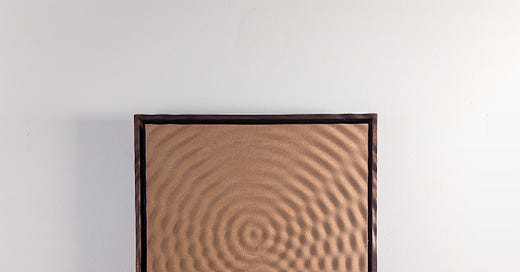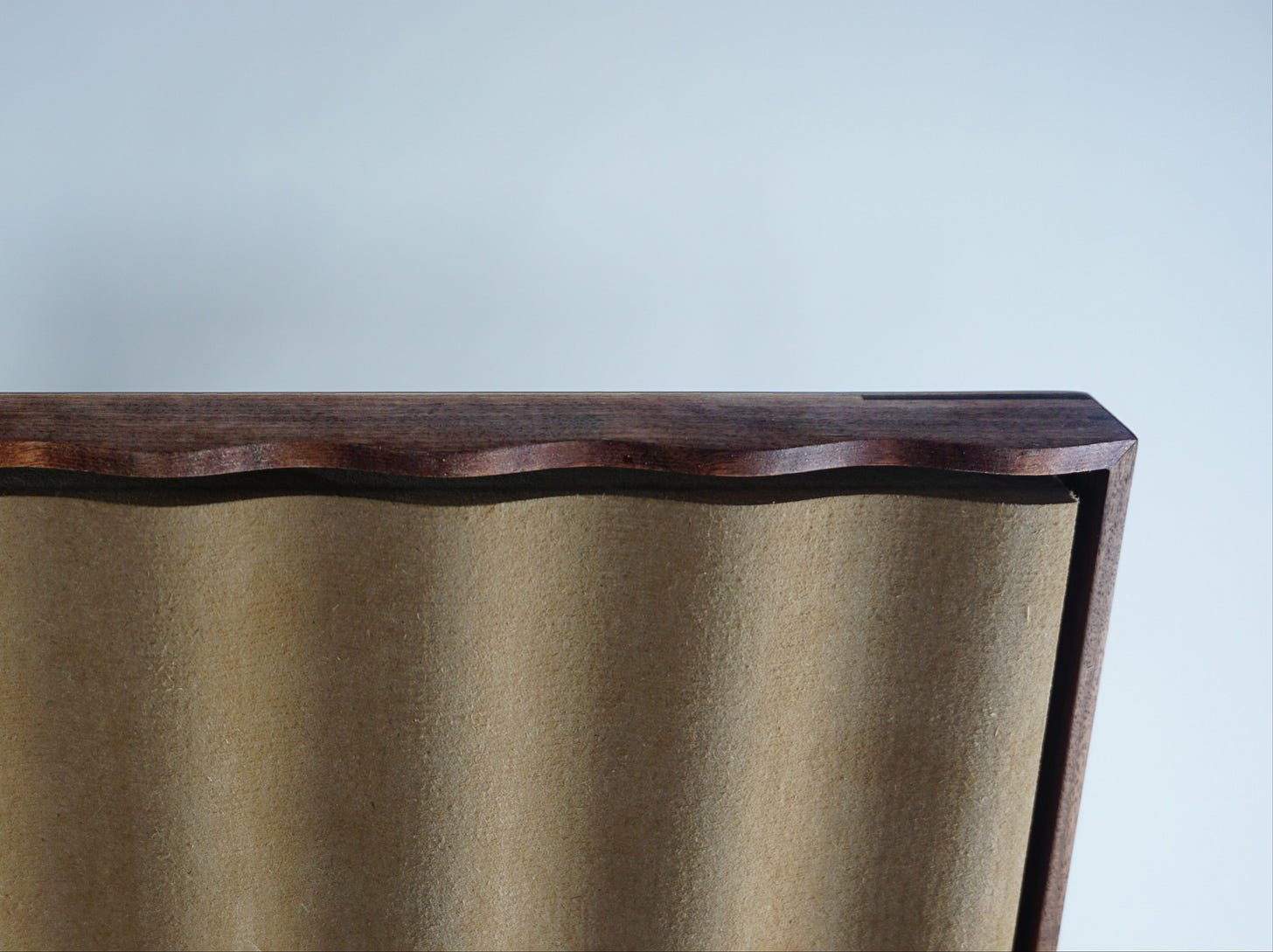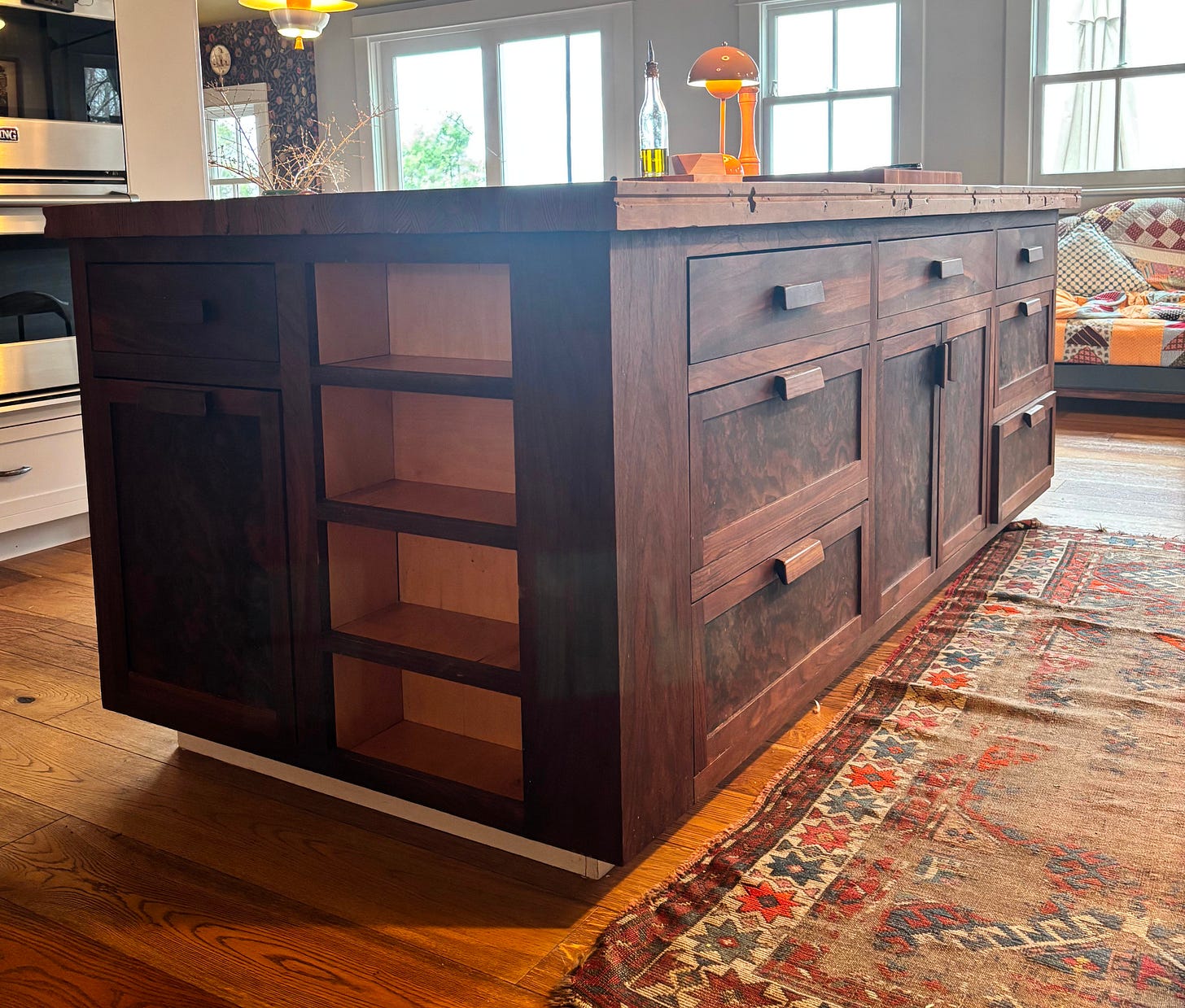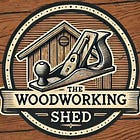Woodworking with a Twist: Ari Kardasis' Story of Math, CNC, and Making
The Woodworking Shed invites special guest Ari Kardasis to share his woodworking origin story!
New to The Woodworking Shed? I’ve got you covered! I've made this handy index page to find every episode in this series and more!
A New Guest in The Shed
back to The Woodworking Shed!
Get ready for something special this week! I'm thrilled to welcome
as my guest poster!Ari is a woodworker who uses CNC to create stunning pieces. He's come to the Shed today to share his fascinating journey into woodworking!
Over to you, Ari!
Well, hello there!
I’m Ari, and I have the great pleasure of being your guest poster for the day. Daniel has kindly handed me the mic so I can give a quick tour of my unlikely journey into woodworking.
Man, woodworkers love a journey, don’t they?
I’ve written a lot of bios in my life, and I don’t want this to be another one. If you want the details, you can find them here.
TL;DR: math, cooking, architecture, software, woodworking.
But this isn’t The Software Shed, so I’m going to zoom in on the woodworking part—how I think about my work, and maybe a bit about how my background feeds into my day-to-day.
Here goes.
What kind of work do I do?
When people at parties ask me what I do, I usually say, “I’m a furniture maker.” But that’s kind of a double lie. First, I don’t really go to parties—the people asking are usually giving me a quote on life insurance or trying to figure out why my pants are always dirty. Second, I don’t actually make that much furniture, at least not yet—not as far as paid work goes.
While I’ve been working with wood for about a decade, it’s only recently that I’ve decided to make it my job. That means I very much want to make furniture for money, but at this stage in my journey —I mean career — I have to take what I can get.
I did just complete a small table for a client, which I wrote about here (you should check it out, if only to subscribe to my Substack). But most of my recent work has fallen into two buckets:
a) fabrication for fine art
b) small kitchen products
The fine art work has been a series of panels and frames for a painter in Nashville. It’s been incredibly fun and rewarding. There’s a big dose of math involved in generating the forms, which I cut on the CNC.
The frames are carved at the same time as the panels, and then the panels are cut down to create the gap that gives the floating frame look.
So yes, lots of CNC work—but inside each frame is a real piece of joinery that has to hold up to hours of 18,000 RPM robot aggression.
The kitchen products—salt cellars, cutting boards, spatulas, and a few others—are for sale in my online store, in local shops, and at various craft and holiday markets. For me, these aren’t just about direct income—they’re about building reputation and relationships.
I’ve spent a lot of time figuring out how to produce them efficiently enough to be profitable, which I think I can do. The hard part, for me, is marketing and sales. I wouldn’t say I’ve cracked that nut just yet.
A quick history of my woodworking journey development
I started woodworking about ten years ago with a mailbox post. I bought a chop saw to make it—and things spiraled quickly from there.
I’ve always made stuff. In architecture school, I was constantly building models. I’ve built a 3D printer from scratch. I’ve tackled countless projects with whatever materials I had on hand. But something about woodworking flipped a switch for me. It scratched an itch for immediacy and materiality that I hadn’t felt before.
My first furniture projects were a pair of side tables. They are horrendously ugly, poorly designed, and crafted by what appears to be a chicken with a blunt chisel. But boy, was I proud of them. I still look at them fondly—even though they now live in my kid’s room. (Photo missing, mercifully.)
Next came a new kitchen island. I had to design it so I could get it up what was basically a ladder from my basement shop. The countertop was, and still is, a repurposed section of bowling lane I found at a junk shop. I had to plane off about 3/16” of alley wax with a bench plane that had never been sharpened.
(Go check out my Instagram if you want to see more of my work.)
At this point, I have to stop myself from describing every single project I’ve ever done. But trust me, I want to.
Then what?
By this point, I was a woodworker—not professionally, but definitely as a hobbyist, and at least somewhat as a skilled one. I loved making things, and I loved engaging with people about it.
I live in a remote area, so there’s not a ton of in-person community for this kind of work. The nearest makerspace is over an hour away. And because space is abundant out here, most people just have their own shops to putter in. So I took my search for community to the internet.
I started a YouTube channel and gave it a real go—posting frequently, optimizing thumbnails and titles, baiting clicks like a dollar bill on a fishing line. I even went to WorkbenchCon in Atlanta to try and level up as a woodworking influencer.
Sidebar: How insane is it that there’s an entire conference just for woodworking influencers? I had a great time—it’s an awesome event. But still. Wild.
Eventually I learned that nothing gets in the way of making stuff more than trying to make content about making stuff.
I’m aware of the irony that I’m telling you this in content I’m making.
So, about a year ago, I made a shift: I decided to make the stuff first, and let the content be a by-product. Not the other way around. It’s 2025—social media is part of doing business. But that’s a different game than being an influencer.
So, it was about a year ago that I decided that I’m going to make the stuff first, and the content will be a by-product of that. Not the other way around. It’s 2025 and social media is a part of doing business, but that’s very different from being an influencer.
Where now?
Right now, I’m in full beg-borrow-steal mode. I’m taking commissions from friends and family. I’m batching out products I think I can sell. I’m making damn sure that everyone I know knows what I do—and that I’m willing and able to do it.
It’s going to take time. But that’s the nature of a journey.
Back to The Shed
Wow, thanks so much, Ari!
That was a truly inspiring look at your process and your passion for woodworking. I'm sure my readers (and myself!) learned a lot.
To see more of Ari's incredible work and dive into his unique approach to woodworking, be sure to check out and subscribe to his Substack! You won't regret it.
Want to share your woodworking story with The Woodworking Shed community? I'm always looking for guest contributors, so reach out and let's collaborate! It's a great way to connect with a wider audience and share your expertise.
Enjoy this episode? Why not share it?
I want to build The Woodworking Shed into a strong, engaging community. So if you know someone else who may enjoy it too: Don’t let them miss out - Share it!
New to The Shed? Pull up a chair…
Subscribe now to stay updated on my shed transformation, tool discoveries, and woodworking projects. Don’t miss out! (Don’t forget to introduce yourself!)
Support the Shed!
You can support The Woodworking Shed by becoming a paid subscriber or by buying me a coffee for a one-time boost. Your contribution helps me to keep delivering great content and justify all these tools!
Got something to say? Join the conversation!
Have a question, a tip, or just want to say hello? Leave a comment below! I love hearing from my readers and building a strong community!
Look forward to hearing from you -
~ The Woodworking Shed
Hungry for more?
Check out my other content! Head over to the homepage to find it all!












Thanks for welcoming me into the shed, Daniel